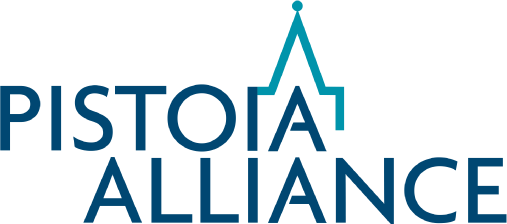94% expect an increase in use of Machine Learning within two years, but access to quality data and technical expertise is a barrier to adoption
Boston, January 9th, 2018: The Pistoia Alliance, a global, not for profit alliance that works to lower barriers to innovation in life sciences R&D, is calling on the pharmaceutical and technology industries to support greater collaboration around Artificial Intelligence (AI) in pharmaceutical R&D. The Pistoia Alliance surveyed the views of 374 life science professionals on AI, Machine Learning (ML) and Natural- Language Processing (NLP). The survey found interest in these technologies is high, with almost half (44%) of respondents already using or experimenting with AI. However, a number of hurdles to their widespread application were also identified – with technical expertise the most cited barrier for AI (30%) and for ML/NLP (28%). The Pistoia Alliance believes collaboration between stakeholders is essential to overcoming these barriers; leading to ‘augmented’ AI that works alongside humans for positive outcomes. In particular, given how crucial data is to building AI algorithms that reveal meaningful insights, collaboration over data standards, benchmark sets, and data access, will be essential.
The survey found that beyond a lack of in-house technical expertise, issues around data are a particular stumbling block to AI projects. Specifically, respondents stated that access to data (24%) and data quality (26%) were two of the biggest barriers to AI projects within their organisation. These same issues – access to data (26%) and data quality (19%) – were again cited when respondents were also asked about obstacles to ML and NLP projects. Life sciences and pharmaceutical R&D currently generates huge volumes of data, which is supplemented with growing data sets collected from mhealth devices and sensors connected to the Internet of Things (IoT). However, access to this data and the formats that data are stored in, vary wildly. Quality data is fundamental in ensuring AI gives accurate and true outputs; this is a significant finding, and one the industry will need to overcome in order for AI to assist researchers.
“AI has the potential to revolutionise life sciences and healthcare – all the way from early preclinical drug discovery to selecting precision treatments for individual patients,” commented Dr Steve Arlington, President of The Pistoia Alliance. “Our survey data shows that while life science professionals are already exploring how AI, ML and NLP can be used – there are clear gaps in the knowledge, data, and skills, which will enable more pharma and biotech companies to achieve tangible results from AI. Impediments to success, such as a lack of industry-wide standards for data format, will need to be addressed, if the potential of AI and ML is to be realised. We urge those in the pharmaceutical, biotechnology and technology industries to explore ways in which they can collaborate now, to find answers to common problems of the future.”
When asked about the use of AI and associated technologies, the results revealed applications are varied. The majority (46%) of AI projects currently take place in early discovery or preclinical research phases; NLP is also employed by just under a third (30%) during early phase research. Other applications of AI were given as development and clinical (15%), and imaging analysis (8%). More than a fifth (23%) of respondents are using ML for target prediction and repositioning, followed by biomarker discovery (13%) and patient stratification (5%). However, adoption is not universal; a notable number of respondents are not using AI (11%), NLP (27%), or ML (30%), at all. Moreover, 8% of respondents admitted they knew ‘next to nothing’ about AI and Deep Learning, highlighting the need for greater education and knowledge sharing
“It is clear that while some early-adopting companies are already employing AI, ML and NLP, there are others that have not yet explored these technologies,” commented Dr Nick Lynch, consultant for The Pistoia Alliance. “While the adoption of AI and associated technologies is in its nascent stages, we firmly believe that for all patients to eventually benefit, a pooling of knowledge is vital. Collaboration will be key to finding the areas, for instance, where AI is good enough to augment and work in parallel with humans. To provide such a forum for knowledge sharing, The Pistoia Alliance has launched an AI and Deep Learning community – bringing together interested parties to share their expertise, as the industry continues in its quest for new medicines that make patients’ lives better.”
The Pistoia Alliance’s AI and Deep Learning community will be focusing on two main areas. Firstly, supporting awareness and adoption of AI though sharing best practice, and secondly, developing and sharing best practice about data – for more information, see here. Two surveys of 374 senior pharmaceutical and life science leaders were conducted via webinar in September 2017. For information and slides from the webinars, see here and here.
— ENDS –
About The Pistoia Alliance
The Pistoia Alliance is a global, not-for-profit members’ organization made up of life science companies, technology and service providers, publishers, and academic groups working to lower barriers to innovation in life science and healthcare R&D. It was conceived in 2007 and incorporated in 2009 by representatives of AstraZeneca, GSK, Novartis and Pfizer who met at a conference in Pistoia, Italy. Its projects transform R&D through pre-competitive collaboration. It overcomes common R&D obstacles by identifying the root causes, developing standards and best practices, sharing pre-competitive data and knowledge, and implementing technology pilots. There are currently over 80 member companies; members collaborate on projects that generate significant value for the worldwide life sciences R&D community, using the Pistoia Alliance’s proven framework for open innovation.
